Awards season for video games published in 2023 is just about wrapping up. And based on what we’ve seen so far, the people accepting the awards aren’t all that diverse.
But if you check out the Spawnies (airing on IGN on February 29 at 6 p.m. Pacific time), you’ll find that around 90% of the people accepting the awards are people of color or women.
The Spawnies are the brainchild of Kahlief Adams, a technophile who hails from the Bronx. He writes and talks about video games on the Spawn Point Blog and Spawn On Me. His Spawn On Me podcast has been downloaded over 1.5 million times and can be heard in more than 125 countries. He enjoys trading good-natured cooking barbs with fellow creator Parris Lilly at Gamertag Radio.
Adams will co-host the Spawnies alongside Riana Manuel-Peña, director of brand & unified marketing at Zebra Partners. He was featured in the Game Awards Future Class for having conversations around race and games. Adams and his show have been featured in publications like The New York Times, Polygon, IGN, Gamespot Forbes and New York Magazine.
GB Event
GamesBeat Summit Call for Speakers
We’re thrilled to open our call for speakers to our flagship event, GamesBeat Summit 2024 hosted in Los Angeles, where we will explore the theme of “Resilience and Adaption”.
Rather than rely on the not-so-diverse media to vote on the awards, the Spawnies is voted upon by the gaming public — the fans. Adams is an employee at Riot Games, where he is a project manager on the DEI Partnerships team. I’ve crossed paths with Adams frequently on the gaming beat and he has been an emcee at past GamesBeat Summit events, thanks to his melodious voice and charming style. At a time when people increasingly care about how their awards are done, I caught up with Adams for an interview at the Dice Summit ahead of this year’s The Dice Awards event.
Here’s an edited transcript of our interview.
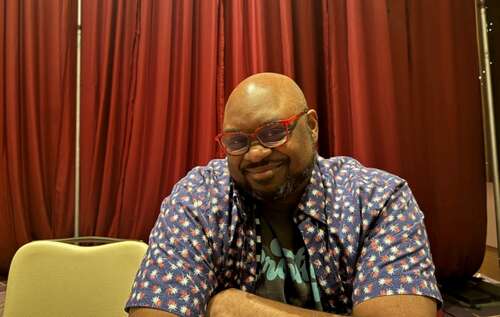
GamesBeat: How did you get started on all of this?
Kahlief Adams: The Spawnies is now three years old. The initial thought behind it was, after going to the Game Awards a couple of years ago, I thought it was a great experience, but it felt like not everything was being addressed in the conversation. How do we build on that from my small perspective about how we can do a show that feels really fan-forward, especially people of color, underrepresented folks?
It’s been great. The reception has been fantastic. We’re doing good numbers for a show that’s kind of come out of nowhere. It feels like the community we built with Spawn On Me is really coming together, and the greater community is seeing the value in it, which is fantastic.
GamesBeat: Are there any numbers you like to point to?
Adams: We broadcast on Twitch, usually. We’ve made the front page of Twitch, which has been great. Twitch numbers are always a bit funky, but we’ve been around–they have live views, and they have main live views. There are differentiations in the way they talk about it. But for live views, which I think is the more important number, we’ve averaged at least 300,000 for every show. We have the nomination show earlier in the year that did around those same numbers.
We’re expanding on it. The show is going on IGN this year as well. We’ll simulcast it. That will definitely build out our numbers even more, build the case for it. But it’s been great in terms of something you think of as a dream project, and then seeing where it lands in terms of visibility.
GamesBeat: Twitch isn’t easy to convince that you should get on their front page. Do they think of it as a kind of mission for them?
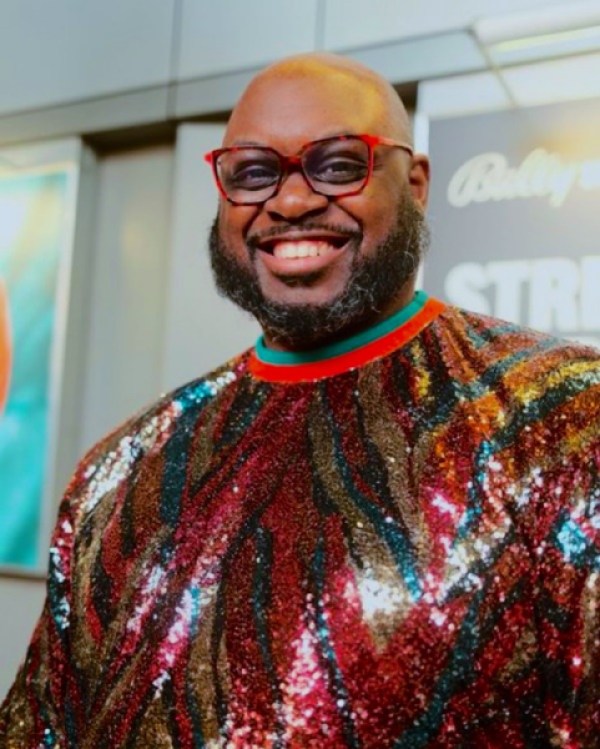
Adams: I’ve been part of a couple of different activations with them over the years. I’ve been Pod Champ for a day. I worked with them on a lot of Black History Month activations. I’ve been part of their ambassador program for a long time. It’s been nice to be able to build relationships with them over the years. Getting front page has been a little bit easier for me as a person who’s done a lot of those things. But also, as a show that’s doing something very different, I’m always coming to them with ideas. How do we showcase the platform well too?
That’s been a part of the way I think about media, the way I think about our show. And overall production–Twitch is fantastic for getting folks into a live space, but the current space, when I decided to get into it, was more about making content that felt endemic to the platform. What’s the best way to put it? Original content on the platform. There are a lot of folks playing and streaming. There aren’t a lot of event kinds of things happening on the platform. I wanted to bring that to the table.
GamesBeat: Did they share any commitment to try to get underrepresented people more airtime on Twitch?
Adams: Not directly. That hasn’t been a part of their direct mission. It’s a part of our north star, for sure, as far as the show goes. But they’ve always been supportive of that understanding. Not just with the Spawnies, but Spawn On Me in general. When we did our Lesson in Blackness show, we got a lot of support for that. I’ve been able to bring on some of their C-suite folks to be able to talk about innovations that they’ve had across that part of the demo there and why it’s important, having conversations behind the scenes about why it’s important. They’ve been a good partner in that.
Now we’re hoping to expand on that with them and figure out how we bridge that gap that we see, where content creators who are black and brown have a harder time in streaming spaces. How do we make that better for them? And how do we be that bridge between the development community and the gaming community with the show that we do in the Spawnies? I think they dovetail really easily for that.
GamesBeat: The extent of the awards and the content, how did you start, and where do you think you are now? What’s evolved or changed?
Adams: The biggest evolution has been, just thinking about it personally–how do you build out a show that feels entertaining? You have examples. You have DICE. You have IGF. You have the Game Awards. You have all those pieces. What can you pick from here that makes sense? What are the parts that connect to the greater culture that we’re trying to represent? What’s the balance there? You see a lot of it there.
For me, it’s always about entertaining first, and then also–again, our north star is, how do we get the folks you may see in the credits of a game, and you say, “That name doesn’t seem like the kind of name you usually think of when you think about game developers.” The archaic version of that. How do we give them a space to talk and give them more time to talk about the work they get a chance to do? That’s been something that has come back in terms of feedback. “I love being able to see folks who look like me accepting an award.”
We do something very special, I think. We have our music performances. We used to do skits here and there, but we’re trying to see if that still fits in the mix. I feel like when you watch this show, you come away from it feeling good about the industry, feeling good about the hosts, feeling good about the idea of what the show can be, which has been fantastic.
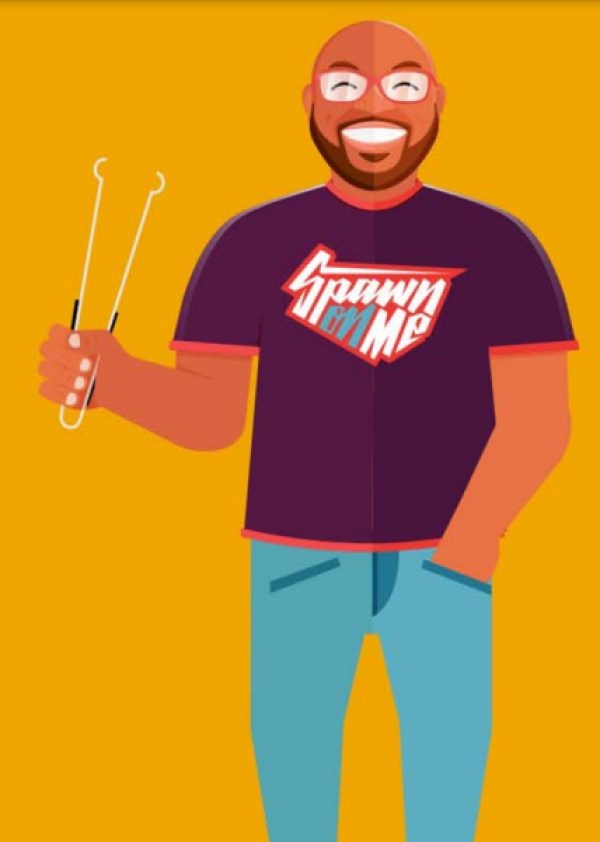
GamesBeat: It’s different from something like the Game Awards, where they’re very focused on how long a speech can go. There were reactions where people felt that went too short, and all the trailers and entertainers went on too long.
Adams: Yeah, 1000%. In my email to folks when I ask for acceptance speeches, I have two things that I tell them. One, we will never play you off. And then the hope is that when you pull someone in from your studio to be the person representing to accept the award, we ask specifically that if you have folks who are people of color or from underrepresented groups, that you let them be the ones who take that award and accept it on behalf of your company. It means a lot for folks who are doing that work to also have a moment of spotlight, to be able to say, “I’m working at this studio. Usually you get folks from the C-suite, or maybe you get the community manager, or the main dev, the creative director. I’m also part of this project too.” I feel like that’s been a lot of fun.
Our goal, from start to finish of the show, is that everyone you see is from one of those groups. We’ve gotten pretty close over the past couple of years. The highest we got to was around 90%. The other 10% wind up falling into the categories of developers you usually wind up seeing, because traditionally the industry is–at least in black and brown spaces, that’s very small in terms of numbers. But the beauty of it has been that we get folks across multiple games and multiple spaces who are stepping up. Those are the folks being on the show. That’s been great to see as it’s been turning, but it’s still a relevant point. We need more folks in those spaces who do that work.
That’s the goal. That’s the purpose of this show. I’ve had a lot of conversations, especially after the last Game Awards, where because of that lack of time for devs to talk, the lack of women on the show, all of those pieces–a lot of folks came to me and said, “We know the Spawnies is here. It’s growing. Are you going to try to take that spot?” And for a moment I could puff up my chest and think, “Yeah, I can do that!” But then I thought about it. I don’t want that to be our show. Of course I want to pull in world premieres and all that stuff, but we have a very specific lane that I’m trying to fill. If I can continue to keep on that straight and narrow, and have more industry folks buy into it, then we’ll have the show I’ve been dreaming about. That’s the more important part. Staying in that lane and building something that, to be honest, nobody else has been able to.
GamesBeat: If you have these teams of people that are between 100 and 2,000 people, they should be able to find someone.
Adams: I’m hoping! But there’s also a layer to that, too, where you don’t want to also then help the idea of tokenism within that conversation. “Hey, the two black and Latino people here, here’s the award, can you be the person to do it?” Having been in some of those spaces as well, there’s a back and forth that has to happen with a company. If you’re a person who’s valued, you feel like you can raise your hand for that. If you aren’t, you don’t want to be the person who’s “just the one” to do that thing when asked for it.
There’s a conversation that goes along with that internally for a studio, having worked at multiple ones. There’s a conversation about the greater community. Does this actually fit the bill for what we want to see, what we want to move forward with? There are a lot of good, smart conversations in there. But I hope that when I send that email out to the folks who are doing that work, that they’re seeing that and receiving that in a way where they feel they want to raise their hand.
GamesBeat: How did you get into this in the first place?
Adams: Spawn On Me is now in its tenth year. I’ve done some broadcasting in video form for a while. I’ve run some shows for non-profits around the time the pandemic hit. Also I hosted DICE a couple of years ago. There was a moment in the pandemic where I was hosting 26 back to back panels and roundtables. I got a really good insight into how an award show works. It was cool to be able to see that and think, “Maybe I can do this. Maybe this is a project I can undertake.” I’ve learned a ton every year. I have more ideas about what the process can be. Again, you’re always looking at the space and saying, “What can we tweak here that would be fun for our show?”
I’ve always wanted to be a person who’s both in front of and behind the scenes. The creator part of it, you see a project and think, “Can this be done well?” I have a high watermark for quality in a space that, to be fair–streaming spaces don’t really care that much about quality in that way. I’m a little bit older. I’m coming from a world that has seen what really good broadcasting can be from a TV and cable perspective. I took a bunch of classes when I was in college. I used to run a radio station show when I was back in college, many years ago. That’s always come with me. How do we have that video/audio experience be something that’s really good and really important? A lot of those pieces have come together to make Spawnies what it is.
GamesBeat: Have you seen any interesting reactions come back to you through the Spawnies? Have you felt like you’re getting better access, better reach on different fronts?
Adams: We’ve gotten more financial support than we ever have this year. Elgato is our big sponsor this year. We have a bunch of folks who’ve come to the table, both from the development side like Double Fine, and then folks like Tech Picasso coming in, or Shopify. It’s been nice to have both endemic and non-endemic brands come together to help build it out and make the case for it.
But also it’s just been nice to have an audience that’s gravitated to it. Our last broadcast, again, we had those big numbers. One of the telltale signs for me, especially on the front page of Twitch, how does the toxicity work? And for almost a two-hour show, I didn’t moderate one single thing in the chat. I would talk to our moderators behind the scenes because it’s a pre-recorded show. “How is it feeling? Are we getting a lot of stuff coming in, a lot of hate coming in?” We didn’t moderate one thing, and that’s unprecedented from what I can tell.
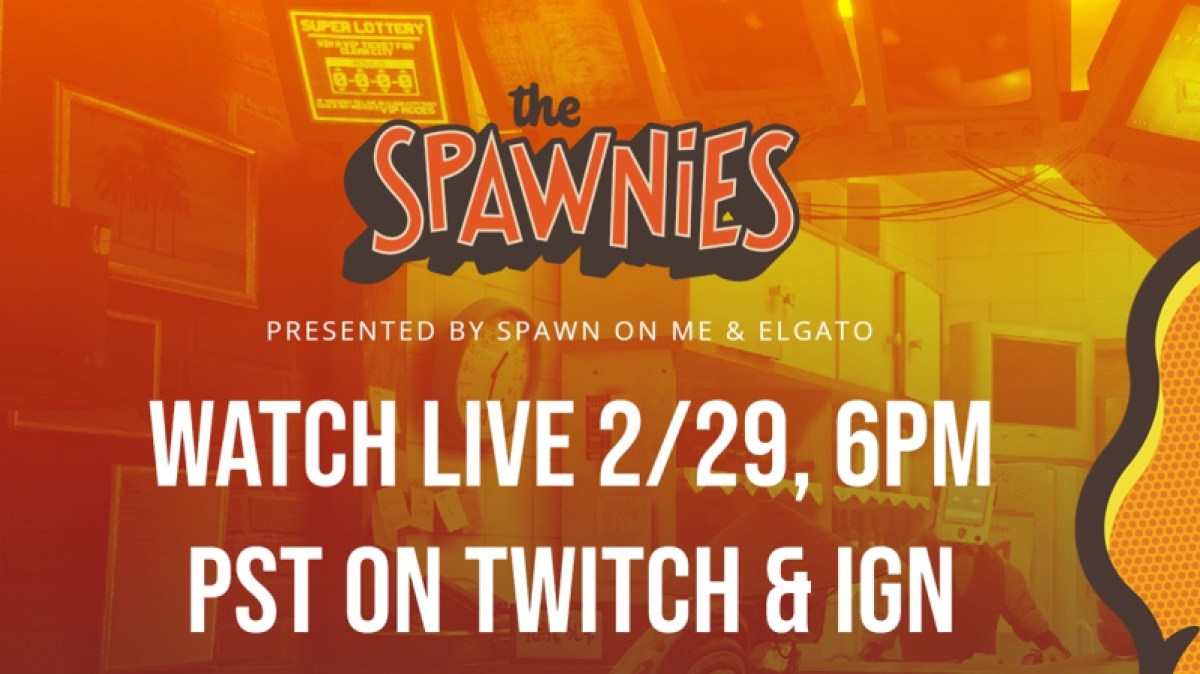
That was a really good sign of, we have built a community that understands us and cares, and we’ve done good work to build a space where the energy feels good for people. That’s been great. That feedback was something that wasn’t verbal, but it was a visual representation of, “Wow, we have something here that means something to people.” People got excited about it. “Do it again next year!”
GamesBeat: What has your experience been like in the game industry in general around diversity and the mistakes people make?
Adams: Everybody–well, I’m not going to say everybody’s trying really hard, because that’s not true. I think folks are trying in the spaces where they can. We see such a big recession in terms of DEI in the space. I used to work at Riot in their DEI layers. I got a good insight into what a big gaming company thinks about diversity and inclusion. And then seeing the tries that people have had over the past couple of years, trying to get that right.
I’m always of the mindset of, I want people to try. I want to give people grace for getting it wrong, for botching it, and then course correcting when you need to, helping them along in that respect. The beauty of the Spawnies is that we don’t have to try to figure out that language, because we live it every day. We don’t have to try to shoehorn it into spaces because it’s built into the ethos of the show. That’s been great, not having to have new language for a thing that you already understand, translating that to an audience. It makes it so much easier for a show like ours compared to others that are still kind of struggling with that. I don’t think a lot of folks are getting it right all the time. But I want to give kudos to the folks who are trying and getting it right. If they don’t, they have a space to do it with us.
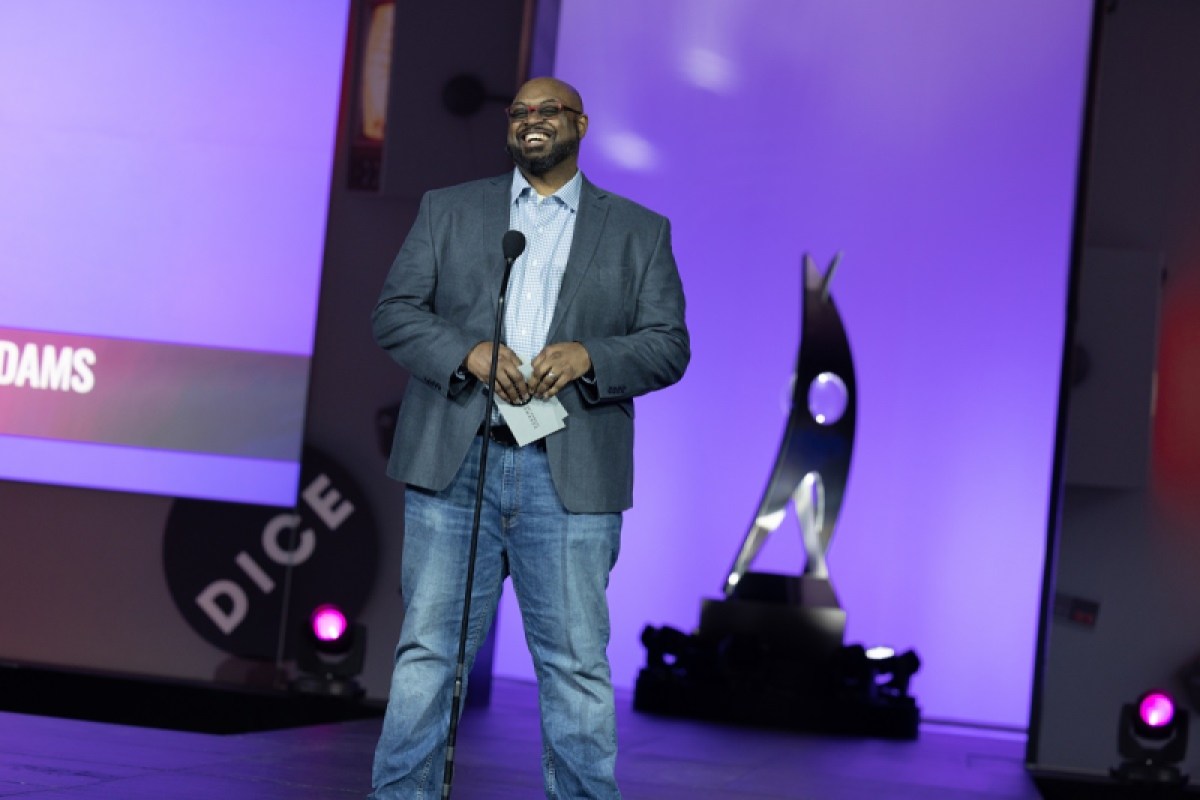
GamesBeat: Do you have any memorable occasions where you had to take a stand? Whether for the show, or in your work in general?
Adams: I’ve had, over the years–we get tagged with a lot of questions that roll into the podcast and the awards show. “Is this for me?” Coming from folks in white spaces. “You have this kind of musical guest,” and they’re a bit risque. They speak in the way that hip-hop culture always has. “Does that feel if you’ll have sponsors pull away from you if you have that in the show?” And my answer has always been, “We are a part of a culture. If you don’t understand, and that makes you want to pull away from it–” And with that other layer of the conversation coming from a lot of brands saying, “We want to be closer to be communities of color. We want to work with folks in those spaces.” If that’s a thing that scares you off, then the thing that you’ve touted as your diversity and inclusion plan doesn’t really hold water.
If that’s the case, then I’d be fine taking your money, but it doesn’t really mean anything if I do. The idea is, I want people who understand it, but I also want people to understand that this is for communities who understand that language, who understand that movement and that energy. If you can’t tie your dollars to that, then that runs into a conversation that I’ve been building for years while I’ve been in the video game space. Not only as an enthusiast press person, but also someone who’s been a developer, who’s been a social media manager, who’s been a community manager.
Especially when I was at Intel, there was a whole big program I ran on the basis of saying, “Communities of color spend money in the video game space. How are we addressing that? How do we talk to them? How do we market to them in real ways?” If we’re not going to have the hearts and minds, diversity and inclusion conversation, which seems to always fail–when you get to the C-suite it’s about P&L. It’s not about DEI in that way. I’m moving that conversation forward and saying, “Here’s an example of how to connect with communities of color. If you can’t do that based on these small external things that you may not understand, let me help you understand it and see the value here.”
GamesBeat: Do you feel like you see progress out there among the gaming public? Or do you find that you still have to educate people?
Adams: The education process is very slow. Players are getting it, I think. Brand managers are getting it sometimes. There’s still a level of education there. And there’s also a conversation that goes back to, how do we really understand audiences? In some of that work we did with Newzoo, the takeaway from that was, we don’t track players in the ways that we can, in the best ways. Some of that is because players don’t want to take surveys, especially in communities of color. There’s a reasonable level of pushback there, a little bit of worry. Why do you want my information? What do you want to do with that? As a black American in America, “What are you going to do with my data?” is built into the ways I think about the world in a lot of different ways.
But also, there’s a need for a lot of folks to come to the table and say, “I do want to offer some of that information.” Think of it as a gaming census. How do you get more resources if people don’t know you’re there? There’s a conversation there to dig into. We’re still having conversations in ways that matter. People have attached themselves and given me and a lot of folks who are doing that work kudos for bridging that gap. But also, how do we make sure that the voices of those folks are being heard? There’s a multi-pronged attack to that. We’re still working on good ways to make that happen.
GamesBeat: I’ve seen you, every now and then, just not being afraid to take political viewpoints or weigh in on situations where that’s necessary.
Adams: Everything is political. I don’t believe in the conversation around apolitical thought. I just don’t. There are ways to address things that are better than a lot of the ways we do it. The conversation about how you reach an audience is important. The way you filter information for them and to them is important. You can make a political stand and have that be a thing you really plant your flag on without alienating people, if you’re willing to have those conversations with them in an honest and thoughtful way. If you come to the table not looking to jab everybody with every thought, I think there are ways to communicate that work in that way, that are better and more beneficial.
I lean into that. I think nuance is still an important part of the conversation. I do want to hear the other side, even if I know that I don’t agree with them. I get more information about how to be tactical when I hear what the other side is doing. But putting my head in the sand doesn’t do anything for me. It doesn’t give me any information in any good way. I’m fine with that when it makes sense, when it behooves me and the conversation. Be smart about it. I’d rather be laser-focused than have a shotgun.
GamesBeat: Do you have any expectations about the results for the show? Are there any expected favorites?
Adams: The beauty of the Spawnies is that it’s all fan voting. The nominees are voted on by the fans. The winners are voted on by the fans. What’s been cool is to see the variation in games. We had 2,000 submissions for nominees. More than 900 different tallies for votes. That was cool. The beauty of the show is that we get a really wide swath of different kinds of stuff. Even if they don’t win, getting a chance to see what comes in is cool. We have an audience that plays stuff in triple-A, double-A, indie, mobile. How are they looking at the video game space? Sometimes you don’t get that full visual. It’s been fun to see that continue to happen.
It’s harder, though. Folks who have an understanding of, “Well, this game could have won, and this game didn’t win–” I tell people, “Get your votes in!” Then you can flip that table and make that game you wanted to get in win. We have some folks who’ve been disappointed. But I’d much rather have the audience do it than try to curate it based on–Riana Manuel-Peña and I, that’s my cohost, we play a certain amount of games per year. I play a bit more than most because I’m a part of the press. But even then, that’s a truncated version of the breadth and depth of what we see in terms of what comes out. I’d much rather index on the audience in that way so that they can be heard, as opposed to just, “Here’s a small funnel of the games that we got a chance to play.” We want it to feel pushed in that way.
I’m excited. We’re hopefully going to expand the show in a big way this year. Next year will get even bigger. Our broadcast partner, IGN, is going to be with us. It’ll be cool to do it for the first time with them. We have a Grammy award winner for our music guest this year, which is wild to think about. I just hope that people come to the table with open minds and hearts about it. This year has been hard. The next couple of years are still going to be hard. But I hope that people can find some catharsis in the hour and change that we have your eyes and years with the show. I hope that people support it, that they come in to be sponsors and viewers and showcase that this has a lane we’re filling that no one else can. That’s the hope.
VentureBeat’s mission is to be a digital town square for technical decision-makers to gain knowledge about transformative enterprise technology and transact. Discover our Briefings.

